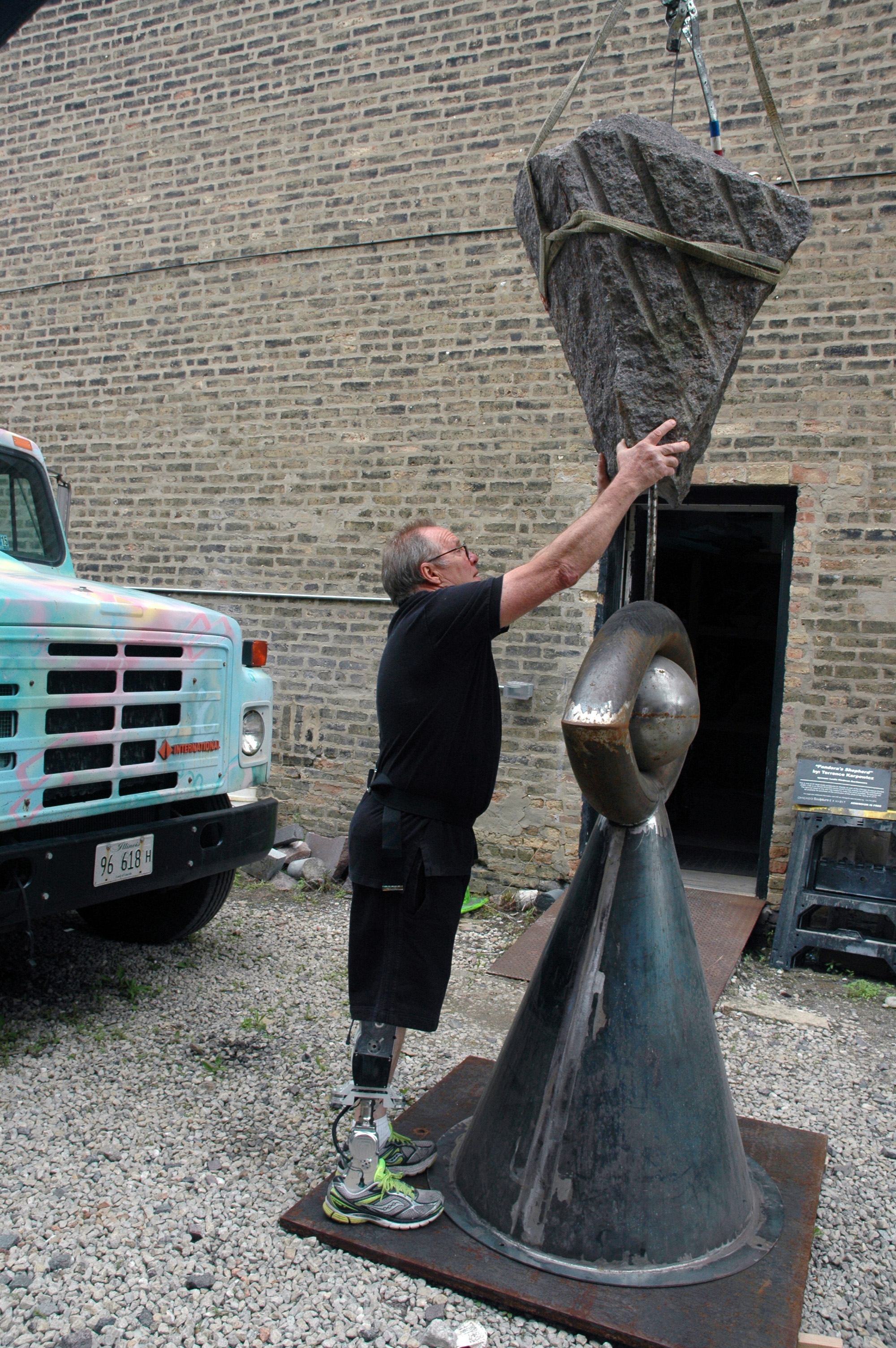Body
Near the Lincoln Park Conservatory on Chicago’s north side, a sleek gold steel sculpture greets visitors: with arms raised, the figure leans in like a marathon runner about to cross a finish line. Its two legs bend and swoop with the grace of an ice skater, but upon closer look, one leg appears shorter than the other.
Aptly named “Finish,” this statue is one of many created by Terrence Karpowicz, an artist and sculptor based in Chicago. In 1975, Karpowicz lost his right leg in a motorcycle accident while studying in Europe on a Fulbright Scholarship.
“My artwork is, as you look it…it’s all autobiographical,” he says. “All the kinetic stuff is about building things that move through space more gracefully than I did.”

Since his accident, Karpowicz has both witnessed and experienced the evolution of prosthetic legs: from passive legs that can be difficult to use for complex tasks like climbing stairs, to powered systems that attempt to mimic the dynamic activity of an intact knee and ankle.
As a research participant, he has long been involved with studies at the Center for Bionic Medicine, testing our group’s lightweight powered prosthetic leg that adjusts motor power and speed based on the user’s needs, and also our intent recognition control system that aims to predict his next move. Both technologies, he says, will help him climb up or down stairs or slopes more efficiently and complete daily tasks like moving from sitting to standing easier.
“I think what it’s going to do is save me a tremendous amount of energy so I can use it to make more sculptures,” he says. “It has the ability to think for me, so I can be thinking about more important things than putting one foot in front of the other.”

Karpowicz adds that as with any relationship, it takes time to first accommodate to using a new prosthetic limb. “You have to learn it, trust it, and ultimately depend upon it,” he notes.
As the prosthetic technologies he has used over the years have evolved, so has his artwork. In the early stages of his career, Karpowicz worked primarily as a painter and woodworker, but eventually he gravitated toward stone and steel, drawn to the physicality of mending the materials into art. “So now my whole body is involved,” he says, “and with the new powered leg, I can use it to do a lot of my lifting.”
Inside his studio, based in the Canaryville neighborhood of Chicago on the city's south side, drills and sanders sit alongside pieces of artwork in progress. While the process of welding and manipulating steel and stone is an arduous task, Karpowicz doesn’t keep track of time when making his artwork.
“I like to spend as much time as I can with a piece,” he says. “When they’re done though, they open up doors for other things to come by; new ideas creep into the picture. You constantly grow with each successive piece and you bring that information forward.”
See more of Karpowicz’s artwork on his website.
—Sheila Burt
